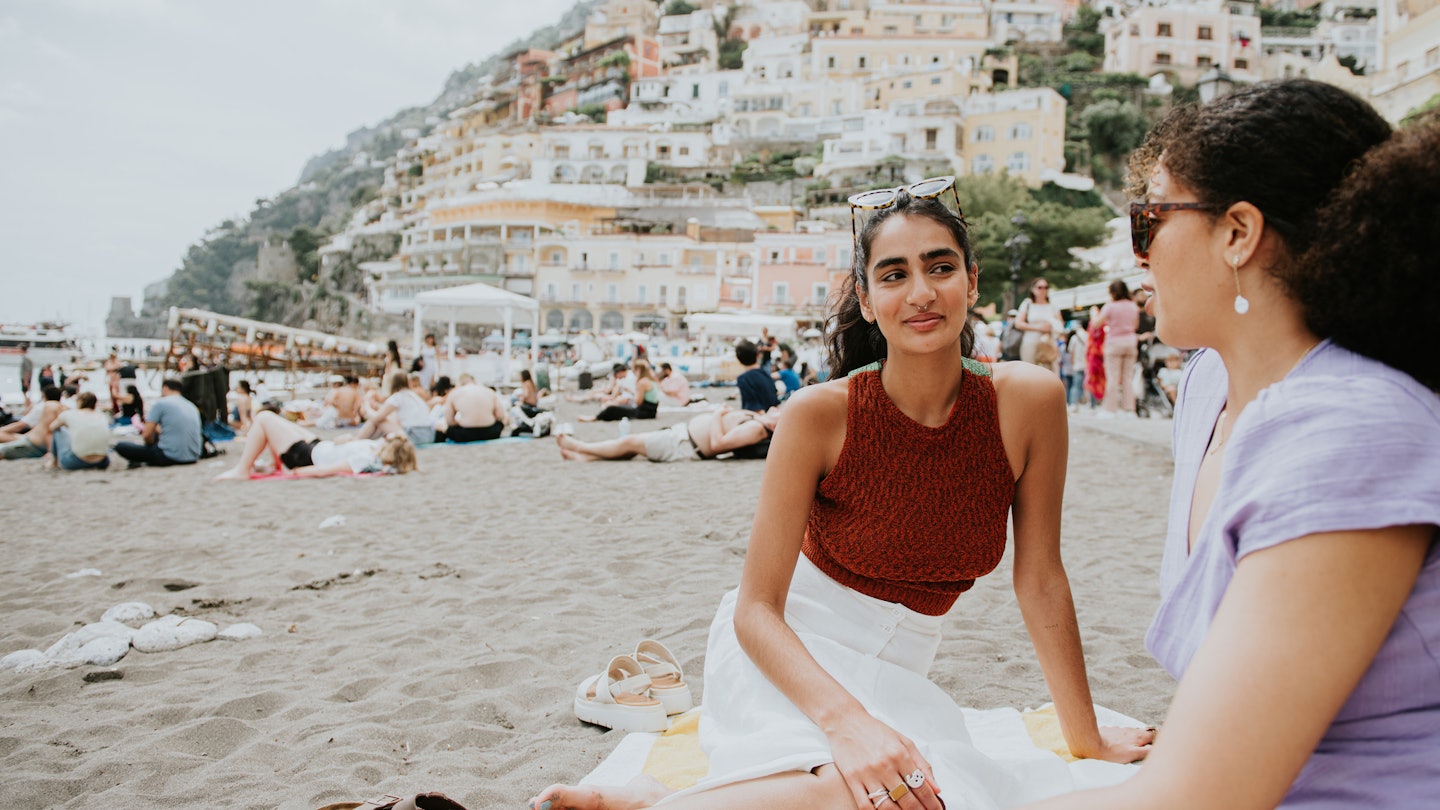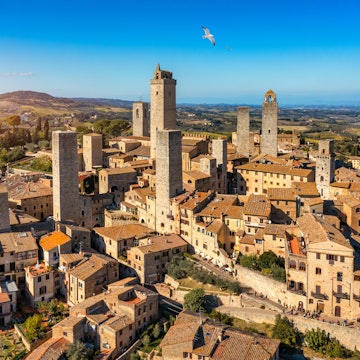
8 insider tips for the best experience of Italy's Amalfi Coast

Mar 1, 2024 • 5 min read

Make the most of your trip to Italy's Amalfi Coast with these top tips for first timers © Catherine Falls Commercial / Getty Images
Running from Sorrento southwards to Salerno, the Amalfi Coast is a jagged rollercoaster of citrus groves edged by cobalt-blue sea.
Its cliff-hugging road, the strada statale 163 Amalfitana (Amalfi Drive), is one of the most beautiful in the world, though not for the fainthearted, and yes, it still gets extremely traffic clogged, despite recent traffic calming measures. The Amalfi Coast is a victim of its own success, yet even the masses that flock here can’t diminish the charm of the world’s most beautiful stretch of coast.
Contrary to what you might think, it’s not all crowds, sports cars and influencers: between the grand villas and tourist-magnet towns rural life goes on, with terraced farmland and local fishing fleets. These top tips on planning, health, safety and etiquette can help you make the most of your trip.

1. Allow at least five days to see the Amalfi Coast
It’s ideal to have at least five days to spend here, especially if you’re taking public transport. This way you could explore highlights of the coast, such as Positano, Ravello, Maiori and Furore, without rushing. The best way to travel between the towns is by ferry. You can take the ferry from Naples to Amalfi, and then hop along the coast. You’ll see beautiful views along the coast, and won’t be stuck in, or contribute to, the traffic problem.
It’s best to book accommodation ahead. Plan ferry hops too, booking tickets on Travelmar, which has the most extensive service.
2. Pack the right footwear
There are a lot of steps to climb in most of the towns along the Amalfi Coast, so you’re likely to be covering a lot of ground on foot. Pack some comfortable shoes or sandals in which you can tramp up and down hills and staircases. However, remember to include some smarter shoes for the evening, as Italians get dressed up for going out and will look askance at sneakers or flip flops.
Most of the beaches along the coast are pebbly and rocky, so it’s also worth packing some water shoes.
3. Try not to add to the crowds and traffic problems
Millions of people visit the Amalfi Coast every year, and July and August are the peak times, when Italians and other Europeans have their long summer break. Since 2023, a new rule prevents even-numbered number plates driving the coast’s famous SS163 Amalfitana on even-numbered days during Easter week, in August, and weekends from June 15 to September 30. This adds an extra layer of complexity if you’re traveling by car.
If you can, the best time to visit the Amalfi Coast is in the early spring (though Easter week is busy) or late fall, when the weather is usually pretty good, and the sea is warmer. If traveling in the lowest season, from November to March, be aware lots of restaurants and hotels take a few months off and close, and ferry and bus services are much more limited.

4. Go beyond the tourist honeypots
During the Amalfi Coast’s long summer, the streets and beaches will be rammed, with every traveler along the coast wanting to enjoy the atmosphere of Positano’s pastel-painted streets spilling down the wooded hillside and the thrilling high up views from Ravello.
However, if you explore outside the obvious places, you’ll discover the side of the Amalfi Coast that has remained the same for hundreds of years. Above Ravello, walk along hidden coastal paths to Tramonti, a village that lies slightly inland. Also connected by the "Path of the Lemons" is Minori, a chalk-hued small town that cascades down the hill to the dark-blue Tyrrhenian sea that feels more off the beaten track. Hike to the Valle delle Ferriere above Amalfi with its waterfalls and forest. If you’re heading to the beach in Positano, try Spiaggia del Fornillo, which is a short walk along a coastal path: it’s usually less busy than the Spiaggia Grande.
5. Careful where you wear your swimwear
Italians care about the bella figura (making a good impression, a beautiful appearance) and they would never dream of going out for dinner in shorts and flip-flops. In towns and resorts along the coast, people will go out for the passeggiata (the early evening "little walk"), when everyone strolls around town in their smarter, evening clothes. Ensure you’ve packed some outfits for the evening so that you don’t mess with the dolce vita Italian vibe.
Sorrento, the town that is the gateway to the coast, has even banned bikinis and men going shirtless in town. The town got tired of scantily dressed tourists thinking their swimwear was appropriate off the beach, and so you can receive an on-the-spot fine (€500) for wearing a bikini or swim shorts in the streets rather than on the sands.
6. Italian tap water is safe to drink, but...
Although tap water is safe to drink all over Italy, the taste of the water can vary. Thus many locals drink bottled water rather than from the tap. If you want to buy bottled water, glass bottles are preferable as they won’t add to plastic waste. However, you don’t have to: you won’t get sick from drinking tap water in Italy.

7. Take preventative measures against insects and sunburn
Mosquitos can be an issue in the summer. Bring some repellent in case you visit a zanzara (mosquito) stronghold.
The sun is strong in southern Italy, and can burn even in winter. It’s wise to bring some high-factor sun lotion with you so that you can find the level of protection you require. Sunscreen also tends to be more expensive on the Amalfi Coast than you might find at home.
8. Bring your basic medicines with you
It’s worth bringing basic medicines such as paracetamol/acetaminophen (tachipirina), antihistamine (zirtec) and any other over-the-counter medications you might regularly use, as, these tend to be much more expensive. Also paracetamol for babies is usually sold as supposte (suppositories), which might not be what you’re used to. Painkillers and other medicines only available in pharmacies and much larger supermarkets in Italy, not regular stores.















